Based in Nigeria, Joshua Nwambe has carved a niche for himself in the global art scene, using Blender 3D to craft intricate and captivating visual art. His work has transcended borders, making an impact across continents, from the USA to the Netherlands. Blender, an open-source 3D creation suite, offers a versatile platform for artists. Nwambe’s […]
Born on June 13, 1987, in Douala, Cameroon, Antoine Onomo’s journey through art and animation is nothing short of inspiring. From a young age, Onomo displayed a prodigious talent for drawing, quickly distinguishing himself with his intricate designs on paper. His early successes included winning several local drawing competitions, setting the stage for a remarkable […]
Water draining slowly from tubs and showers is usually caused by hair stuck in the drain. Soap, shampoo, and dirt stick to the hair, slowly making the clog bigger, and eventually slowing and clogging the drain.
You end up standing in dirty water while you shower and have to clean a grimy bathtub. Use some of the following methods to clean out your drain. One of them or a combination of them work 90% of the time.
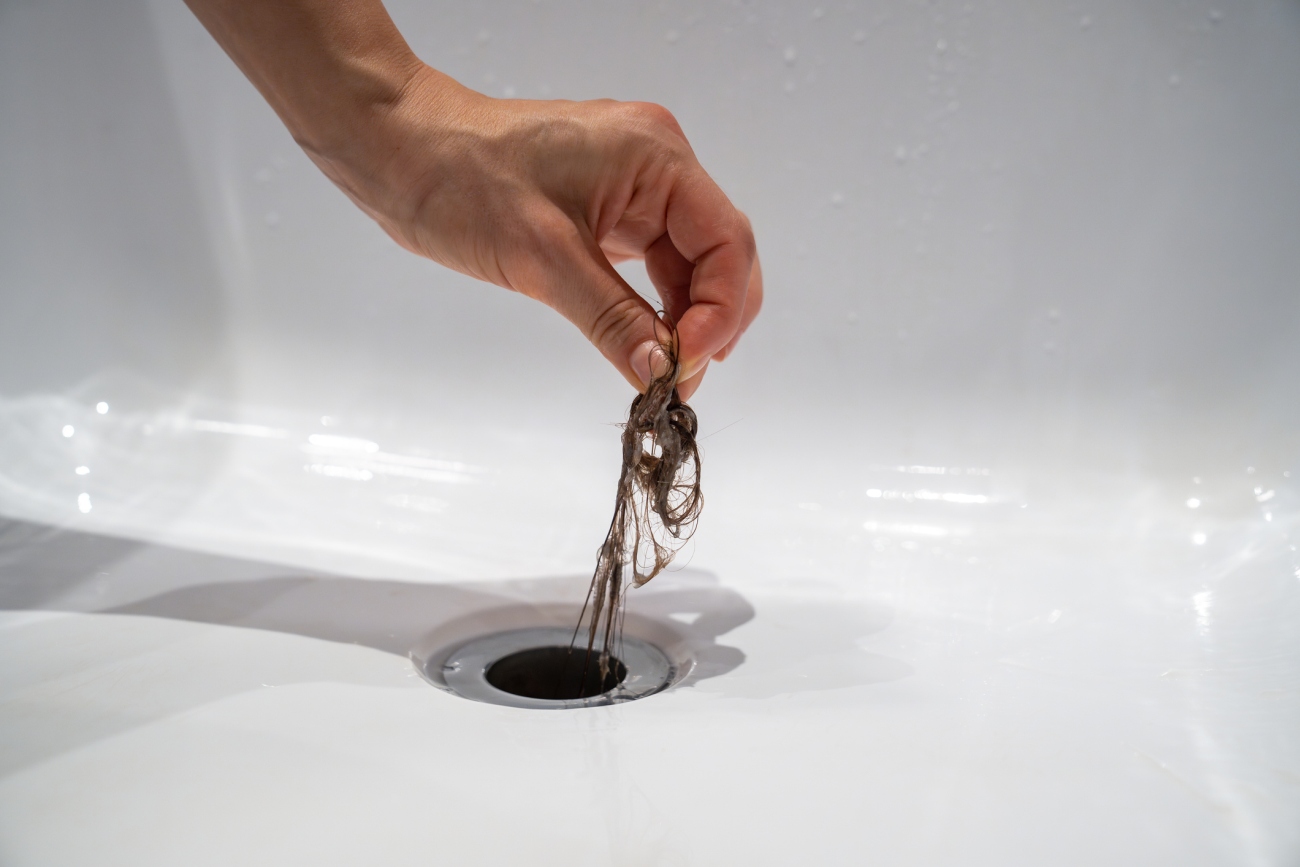
Get the Hair Out
Hot water, vinegar, and chemicals do not dissolve hair. You have to physically remove it for effective drain cleaning. Remove the stopper and strainer if there is one and use one of the following tools to pull out the hair.
Homemade Hair Pick
Cut a wire coat hanger at least 12” long to reach the bottom of the P-trap. (Any stiff 12 gauge wire works.) Bend a half-inch hook into one end of the wire. Make sure the hook is tight enough to move easily in the drain. It should hook any hair in the drain and pull it out.
Drain Stick
Drain sticks look like zip ties with barbs. They are flexible and long enough to pass through the P-trap and pull out the hair. They may not be stiff enough to push through large hard clogs. They are available in 5-packs and cost very little.
Drain Claw
Drain claws are flexible metal tubes that encase three or four metal claws. They are relatively inexpensive and available in lengths up to 5’. Push it down the drain until you feel resistance, then depress the plunger to extend the claws and grab the clog.
Dissolve the Clog
Once the hair is out of the drain, move on to getting rid of the rest of the clog and clean out the drain pipe using any of these methods. Or a combination of them. Any remaining hairs should pass through the pipes with the other material.
Plunger
Plungers are usually the first option you think of when water runs slow. Use yours properly for the best results.
- Remove the drain cover or stopper.
- Seal the tub or sink overflow with painter’s tape to prevent air from escaping.
- Position the plunger to create an airtight seal over the drain. Soft bell-shaped plungers work best.
- Run enough water into the tub or sink to cover the plunger.
- Plunge vigorously for 20 or 30 seconds without losing the seal.
- Remove the plunger to make sure water is draining well.
- Repeat if necessary.
Hot Water and Dish Detergent
Dish detergent and hot water remove caked-on material. Pour about a half cup of any liquid dish detergent into the drain. Make sure it runs down the entire circumference of the drain. Pour a gallon of hot water down the drain. Use boiling water in metal pipes and hot tap water on ABS plastic to prevent damage to the pipe.
Ensure the water is draining properly. Repeat the treatment to remove any remains of the clog. Hair and soap scum sticks easier to the remnants of old clogs and build up new clogs quicker.
Vinegar and Baking Soda
The foaming action of vinegar mixed with baking soda removes clogs and caked-on grime from drains. Pour a half cup of baking soda into the drain. Dry pipes allow it to slide down to the clog or P-trap. Pour a half cup of white vinegar into the drain. The mixture turns into a hot foam that eats away at the clog.
Cover the drain with a wet cloth and let the mixture work for an hour. Flush out the drain pipes with a gallon of hot water. Repeat if the water is not running freely.
Plumbing Snake
You may need a plumbing snake to get rid of stubborn clogs or clogs farther down the pipes. Hand-operated 25’ long snakes are available for under $50.00. Slide them into the drain and follow the instructions to cut through clogs and remove caked-on grime from the pipes.
Call a Plumber
If you can’t get the water running, it is a sign you need a plumber. The clog might be in the main drain pipe. It is probably caused by something more serious than hair and soap scum. Plumbers have the equipment and expertise to diagnose and repair the problem.
The post How To Unclog a Bathtub Drain Effectively appeared first on Homedit.
Regular bathtub cleaning prevents mold and grime buildup. A family bathing and showering regularly deposit cleaning products, body oils, dirt, and skin flakes on tub walls, tiles, and shower enclosures. Wiping them down after every use is very helpful, but grime eventually builds up.
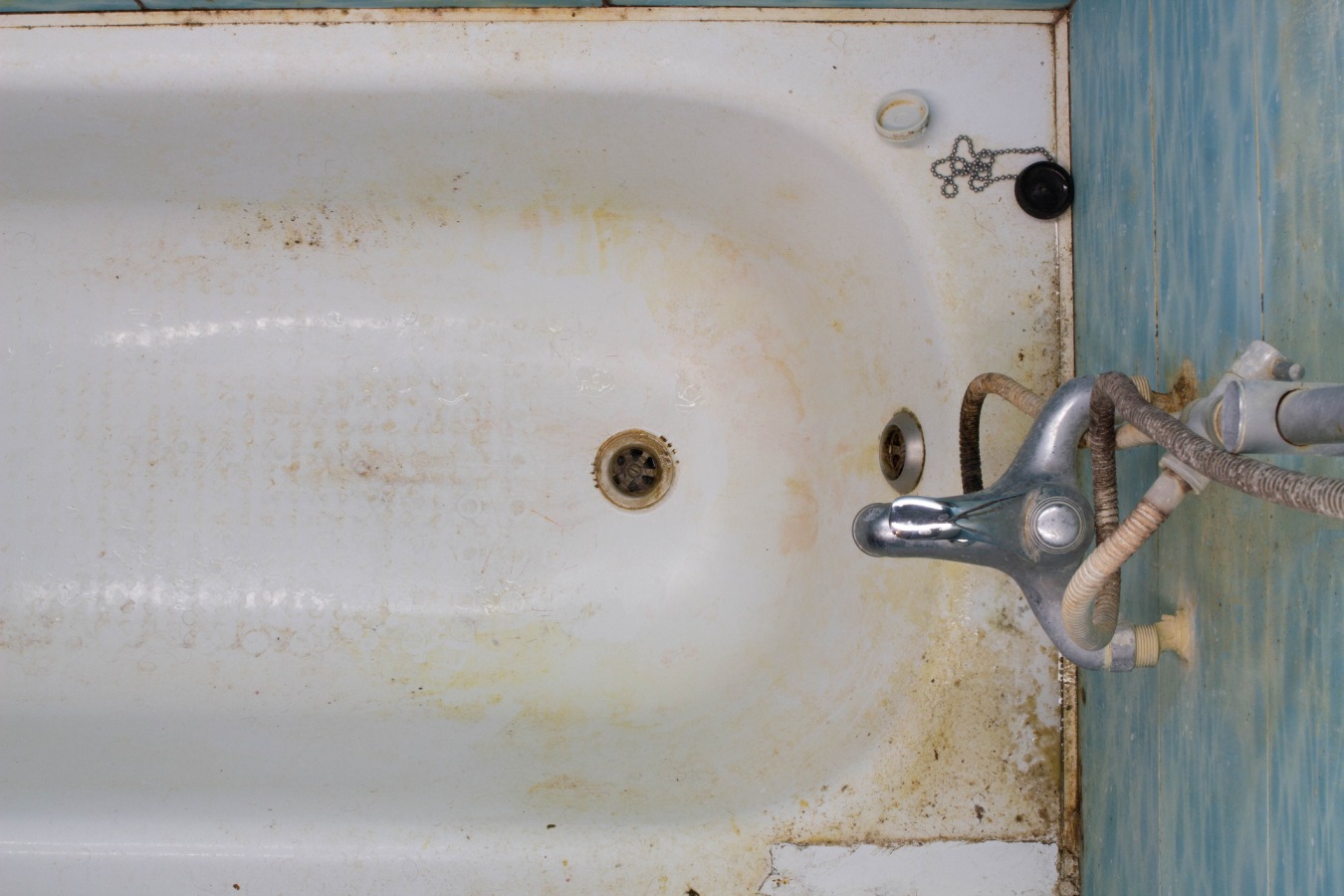
Tub Cleaning Tips You Should Know
Cleaning the tub every week or two usually prevents grime buildup. Wiping the tub dry and running the exhaust fan during and after every use prevents humidity and scum buildup.
Stop Using Bar Soap
Bar soaps cause most soap scum buildup in tubs and showers. Bar soap scum sticks to everything it touches. It is a food source for mildew, mold, and pink mold. Dirt and hair conditioner stick to soap scum and leave dark rings in tubs after they are drained. Replace bar soap with liquid body wash for cleaner tubs.
Dish Soap and Vinegar
Fill a spray bottle with equal amounts of vinegar and dish soap. Shake well to mix the ingredients. Spray the walls and floor of the tub or shower stall. Let it work for up to an hour, then wipe the tub clean with warm soapy water. Rinse with warm clear water. It works great to remove soap scum.
Baking Soda and Hydrogen Peroxide
Fill your tub with warm water to cover the dirt ring. Add about a half cup each of baking soda and hydrogen peroxide. Mix well and let sit for 15 or 20 minutes. The foaming mixture loosens grime and sticks to the sides of the tub. Drain the tub, rinse, and dry for a clean tub.
Bar Keepers Friend
Bar Keepers Friend is a cleaner that has been around for over 100 years. Its main ingredient is oxalic acid–originally discovered in rhubarb–which removes soap scum, grime, rust stains, and limescale. The cleanser sticks to vertical surfaces and wipes off easily–taking scum and grime with it.
Magic Eraser
Magic Erasers remove soap scum, grease, and surface dirt. They contain bleach that gets rid of mold and cleans grout lines. Available in multiple combinations to clean tubs, showers, shower doors, and tiles. They are great for general bathroom cleaning.
Tub Cleaning Do’s and Don’ts
These suggestions make cleaning the tub quicker, easier, and safer.
Do’s:
- Power Brush – Buy a rechargeable electric cleaning brush–with a long handle–to save effort. They are inexpensive, efficient, and save time.
- Follow Instructions – Read and follow the instructions on commercial cleaning products for the best results and personal safety.
- Soft Tools – Use soft tools like sponges, microfiber cloths, and soft nylon brushes to prevent damage to the tub.
- Preventive Maintenance – Wipe the tub dry after every use. Spray it with vinegar once or twice a week to prevent soap scum and grime buildup.
Don’ts:
- Abrasive Cleaners – Abrasive cleaners like some powders, and tools like steel wool and stiff bristle brushes easily scratch and scar acrylic and fiberglass tubs. Damaged tubs are more difficult to clean.
- Mixing Cleaners – Mixing vinegar and bleach produces chlorine gas. Mixing bleach and ammonia produces chloramine gas. Both can be fatal–especially in small enclosed spaces like bathrooms. Read the list of ingredients and cautions on any commercial cleaner.
The post How To Clean a Grimy Bathtub appeared first on Homedit.
22 Aug, 2024 | Admin | No Comments
Tshepiso Moropa: Bridging Past and Present Through Digital Collage & Motion
Tshepiso Moropa, a Johannesburg-based visual artist and archivist, is redefining the intersection of art and identity through a diverse array of mediums, including illustration, collage, painting, photography, and film. Her unique artistic journey has been marked by a deep passion for the medium and an unwavering commitment to storytelling through the art of collage. Her […]
Regular bathroom cleaning is necessary to eliminate grime, bacteria, and mold. Clean bathrooms smell better. Bathrooms are used regularly by a number of people–some of whom may leave it messy. Bathrooms are full of hard-to-clean fixtures like faucets, toilets, drains, mirrors, and vanities. Use some of these tips and tricks to make the job easier and the bathroom cleaner.
Few people look forward to cleaning bathrooms but using these tips makes the job go quicker and the results more successful.
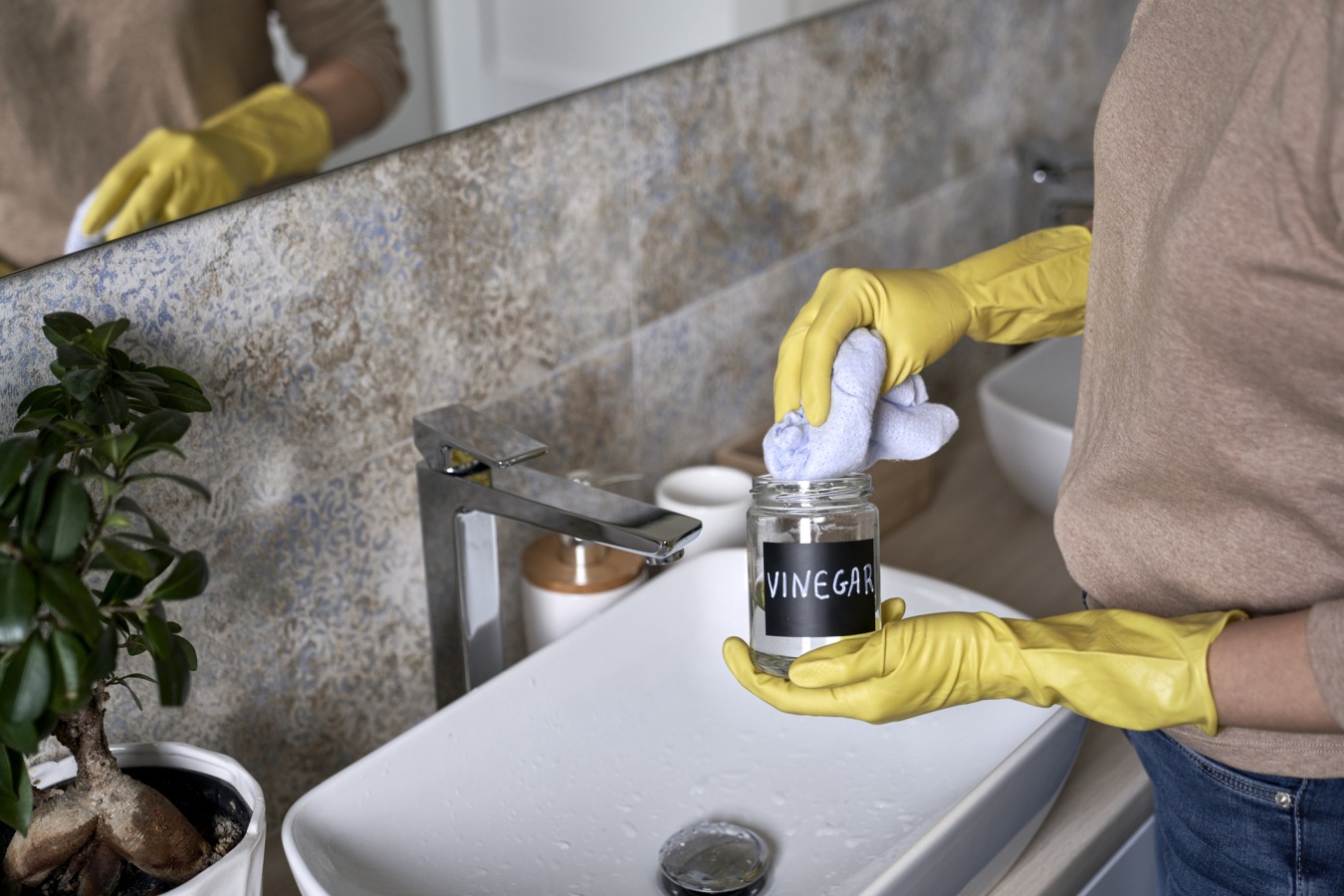
Vinegar, Water, and Baking Soda
Vinegar and baking soda are popular inexpensive cleaners in most households. They have many uses in bathrooms.
- On the Shower Curtain – Use a 50/50 vinegar/water mixture to spray showers, doors, and curtains after every shower or every second shower to keep soap scum from building up.
- In the Toilet – Sprinkle baking soda into the toilet bowl regularly before flushing. It is slightly abrasive and helps keep the bowl clean between scrubbings.
- In the Drains – Pour about six tablespoons of baking soda down bathroom drains if they are running slowly. Add the same amount of vinegar. Let sit for about 30 minutes, then rinse it away with warm water. Let the water run for at least five minutes for a good drain flush. This works on soap scum and other blockages. It does not work on hair.
- For the Shower Head – Remove the shower head and soak it in distilled white vinegar overnight to clean off built-up mineral deposits.
- Grout Cleaner – Make a paste with baking soda and water. Use a toothbrush to scrub the grout lines, then rinse clean.
Use Clean Tools
Clean your cleaning equipment after every use. Dirty mops, dusters, cloths, and brushes spread dirt around instead of removing it. Dried, crusty, and gritty dusters and cleaning cloths can scratch some surfaces.
Toothbrushes and Chopsticks
Don’t throw out old toothbrushes. They make great cleaning tools for tight hard-to-get-at places like faucets, vanity handles, grout lines, and more. The bristles remove grime and mold.
A microfiber cleaning cloth on the end of a chopstick also gets into tight spots when you don’t need the friction of a bristle brush.
Microfiber Cloth Cleaning
Buy and use microfiber cleaning cloths. They trap bacteria and dirt. They don’t leave lint or streaks and clean easily in the washing machine.
Courtesy: freepik.com – Cleaning with a microfiber cloth.
Use Hydrogen Peroxide For Mold and Mildew
Hydrogen peroxide kills mold and mildew just like bleach but without the odor or potential health problems. Spray it onto the affected area, let it sit for about 10 minutes, then scrub the area clean.
Dust First, Then Clean
Get the dust out of the bathroom before cleaning. Dust clogs up cleaning tools and leaves streaks. You may just be moving it around and leaving it stuck in a different spot.
Electric Power Scrubbers and Toothbrushes
Battery-powered electric bathroom scrubbers make a quick and efficient job of cleaning tubs, toilets, sinks, and tile. There are many options with various attachments available for $50.00 or less. You can also get attachments for electric drills but drills are bulkier and heavier.
An electric toothbrush saves scrubbing effort in small tight spaces. Save the old brush heads for cleaning when you change to a new one.
Clean Family Toothbrushes
Toothbrushes remove the bacteria from your mouth, then they dry on the brush until the next use. Electric toothbrushes collect bacteria, saliva, and toothpaste between the brush head and motor.
Soak the bristle parts of toothbrushes in hydrogen peroxide overnight. Remove the brush head from electric toothbrushes and soak them and the motor end. Rinse clean in the morning. Soak toothbrushes in hydrogen peroxide weekly.
Use Shaving Cream As a Cleaner
Use shaving cream in the bathroom for more than just shaving.
- Jewelry. Gentle and effective. Rub jewelry for a couple of minutes in shaving cream, then rinse well to restore the shine.
- Mirrors. Spray bathroom mirrors and shower doors with a thin layer, then wipe it off to prevent fogging after a shower.
- Faucets. Polishes bathroom and kitchen faucets to a bright shine. Especially effective on stainless steel.
- Makeup Stains. Spot clean towels, facecloths, and other fabric. Let sit for 10 minutes. Blot off the shaving cream and wash normally.
Use Aspirin for Cleaning Pain
Two aspirins dissolved in water removes soap scum from faucets and sinks and showers. Aspirin works because it is slightly acidic and can substitute for regular cleaners if you run out.
Use Cooking Spray In the Bathroom
The oil in non-stick cooking spray breaks down and removes lime deposits. It is a safe and easy-to-use cleaner.
- Vanity Hinges. Lubricates and prevents squeaking.
- Faucets. Put a shine on sink and tub faucets by spraying with non-stick cooking spray and wiping clean.
- Soap Scum. Works on shower stalls and tiles. Rinse with hot water so the shower floor is not slippery.
- Shower Doors. Removes soap scum and lime deposits. Rinse with hot water to remove the oil film.
Keep It Dry
Use your hand towel or bath towel to dry faucets and fixtures every time you wash or shower. Removing drips and spray regularly keeps chrome shiny and makes regular cleaning easier. Make sure the floor is dry after showering. Wet dust sticks better to floors, countertops, and toilets. Dry floors are safer to walk on.
Use a Bleach Pen
Bleach pens make cleaning grout lines easy without bleaching the entire surface. Run the pen over the grout, leave it sit overnight, and wipe it clean with warm water.
Clorox bleach pens are difficult to get (discontinued?) and expensive. Similar products work well on fabric but may not clean grout as effectively.
Recycle Silica Gel Packets and Used Dryer Sheets
Silica gel packets absorb moisture. Save a few that come with your purchases and place them in the medicine cabinet. They reduce the humidity that rusts razor blades and affects medicines. The bath fan can’t remove humidity from an enclosed cabinet.
Used dryer sheets are slightly abrasive. They remove lime deposits from tubs, fixtures, and bathroom tile. Make the slightly damp and rub out the lime.
Toilet Brush Etiquette
Dirty wet toilet brushes put back in the holder grow mold and bacteria. After use, disinfect the brush with hydrogen peroxide. Trap the handle between the toilet seat and bowl so it can drip into the toilet. Make sure the brush holder is clean before putting the brush away.
Use Pumice Stone For Toilet Rings
Pumice stone is a soft abrasive that scrubs away limescale, rust, and hard water stains in toilets without damaging the porcelain surface. For best results, lower the toilet’s water level but keep the stained area wet while working on it.
Shower Squeegee
Wiping down showers and tubs after using them is a must to prevent soap scum buildup, streaks, and mold. A shower squeegee makes it easy to remove water drops and mineral deposits from shower doors, tiles, and tubs.
Dry the Shower Curtain
Spread out your shower curtain to get air to the whole thing. An open window or bathroom exhaust fan moves drier air around it. Wet curtains promote mold and mildew growth. They can stay damp between showers if pushed into a bunch.
The post Bathroom Cleaning Tips and Tricks You’ll Wish You Knew appeared first on Homedit.
Cleaning the shower is no one’s idea of a fun time–but making cleaning mistakes is worse. Missing or avoiding small chores eventually leads to bigger problems like mold, mildew, leaks, and repairs. Cover all your bases with these tips.
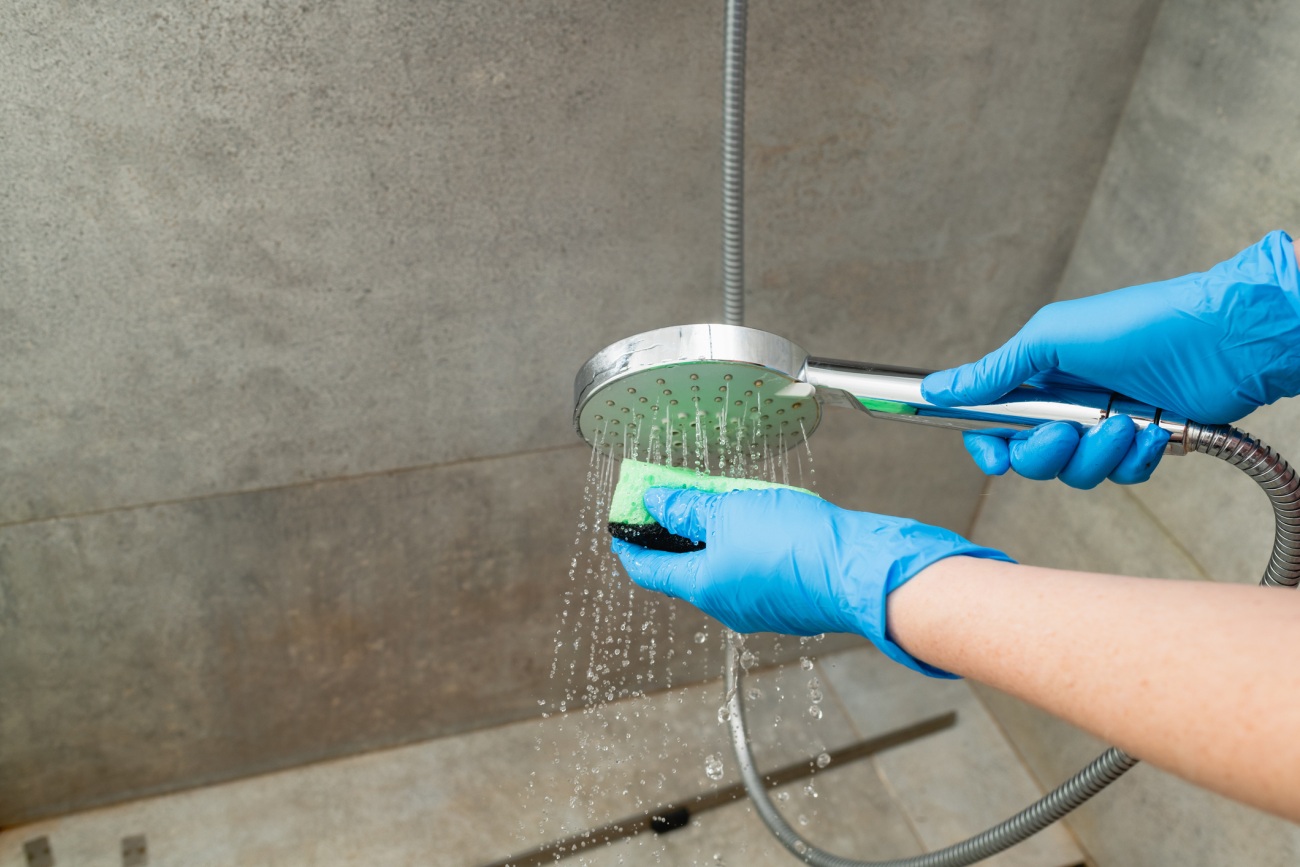
Not Turning On the Fan
Bathroom exhaust fans are a big aid to shower cleaning. The humid air left in the bathroom during and after showers helps dirt, dust, soap particles, and aerosols adhere to the shower walls, tub, and curtain. Your fan should be able to move enough cubic feet per minute (CFM) to exhaust moist humid air quickly.
Run the fan during your shower and for an hour after to get the moisture out of the bathroom. Install a timer switch to prevent it from running continuously. Run the fan when you are cleaning the shower to exhaust chemical fumes and open the window if your bathroom has one.
Not Drying the Shower After Each Use
Leaving water drops in the shower invites dirt and dust to stick–especially on tile grout. Mold grows on wet dust. Eventually, it will start growing on tile grout, caulking, and shower curtains. Use a squeegee or rag to wipe down the walls, door or curtain, and shower floor after each shower.
Mold growth on caulking eventually separates it from the surfaces it is supposed to seal. Water getting onto drywall and framing members causes mold growth and eventually rot. Drying and cleaning the shower regularly saves expensive repairs.
Procrastinating
Ignoring cleaning the shower until it is really dirty only makes the job more difficult. You have to spend more time and work harder when you finally tackle it. Dirt and grime are more difficult to remove and you may have to deal with mold growth. Set a regular schedule and stick to it.
Using Abrasive Cleaners and Harsh Chemicals
It is tempting to use stronger chemicals and scrub harder to clean very dirty surfaces. Don’t. Abrasive cleaners and stiff brushes damage tile grout. Water can then seep behind the tiles and damage the drywall or loosen the adhesive holding the tile onto the wall.
Abrasive cleaners also scratch acrylic tub surrounds and shower doors. They can etch glass doors. Scratched surfaces hold more dirt and moisture-making future cleaning more difficult and less successful.
Breathing in harsh chemicals is a health risk. Only use them as a last resort. Start with vinegar and baking soda, dish detergent, or gentle non-VOC products. Do not use bar soap. It will only add soap scum to the mixture of dirt already there and encourage mold growth.
Ignoring the Small Stuff
When wiping down or cleaning the shower walls and doors don’t ignore faucets, shower heads, spouts, drains, soap shelves, and shampoo holders. These all have areas where dirt, mold, and limescale build-up are unseen. The longer it is left the more difficult to clean and the shorter lifespan they have.
Remove shower heads, tap handles, and spouts periodically. Soak them in vinegar to remove lime. Use a toothbrush to remove all grime.
Not Preventing Mold
Ignoring mold growth–pink, black, brown, or white–until the next cleaning is unhealthy. It can be controlled by spraying the shower with a weak bleach solution (one part bleach to ten parts water) weekly. Spray and let sit for about 20 minutes, then rinse it off and dry the shower enclosure. It only takes a few minutes but saves a lot of cleaning time and mold removal.
The post Mistakes To Avoid When Cleaning Your Shower appeared first on Homedit.
19 Jul, 2024 | Admin | No Comments
Update Your House With a Colorful Bathroom: Tips and Tricks to Nail the Style
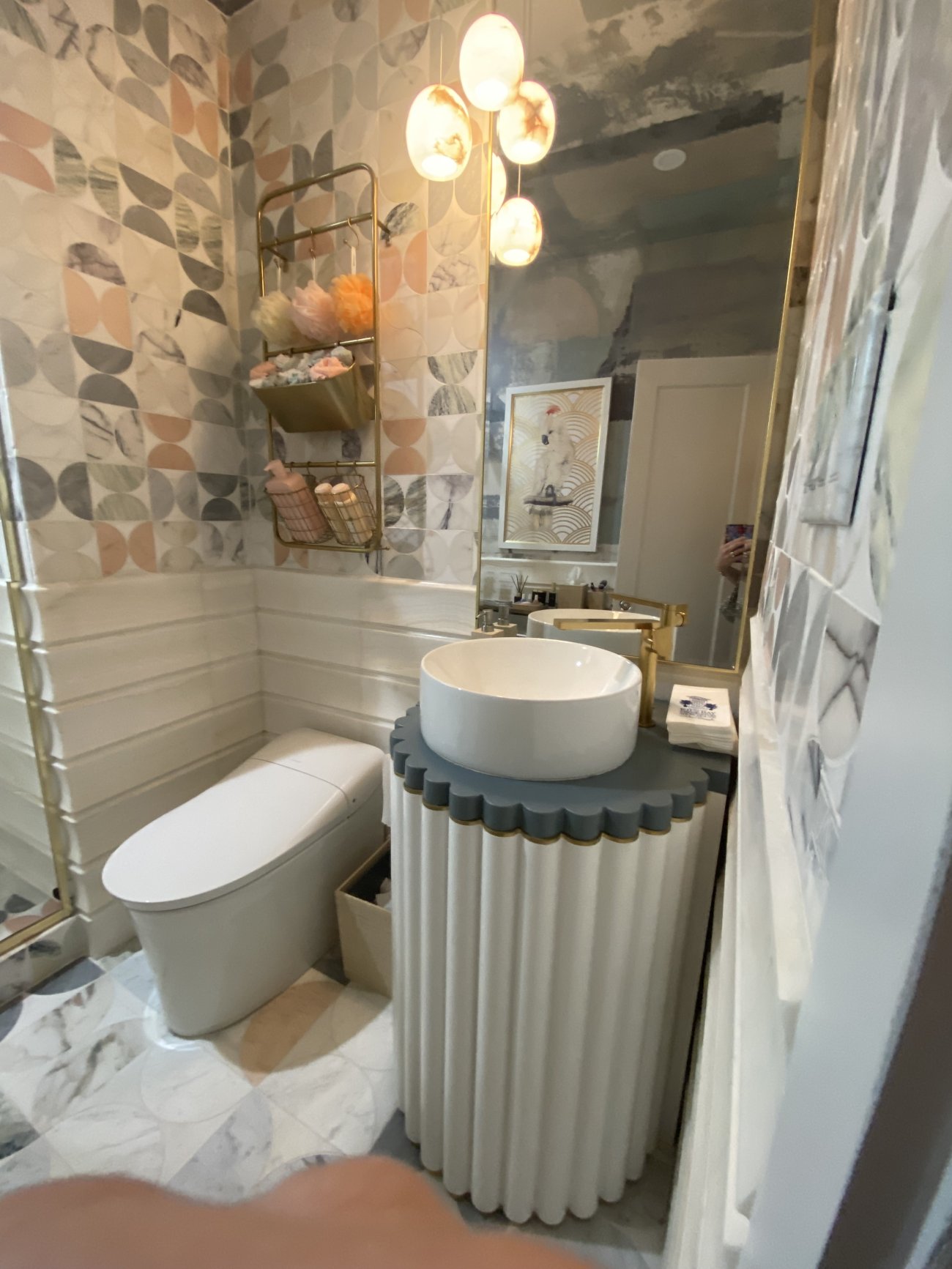
Colorful bathrooms are making a vibrant comeback in modern interior design, transforming these out of the way rooms into lively and stylish sanctuaries. Today’s bathrooms are moving away from the neutral and monochromatic looks of the past, instead embracing striking patterns and bold colors.

This color resurgence is a variation on past colorful styles, allowing for a more personalized and dynamic aesthetic that allows for greater self-expression. The fact that bathrooms are typically quiet and out of the way makes them great places to go a little crazy with design.
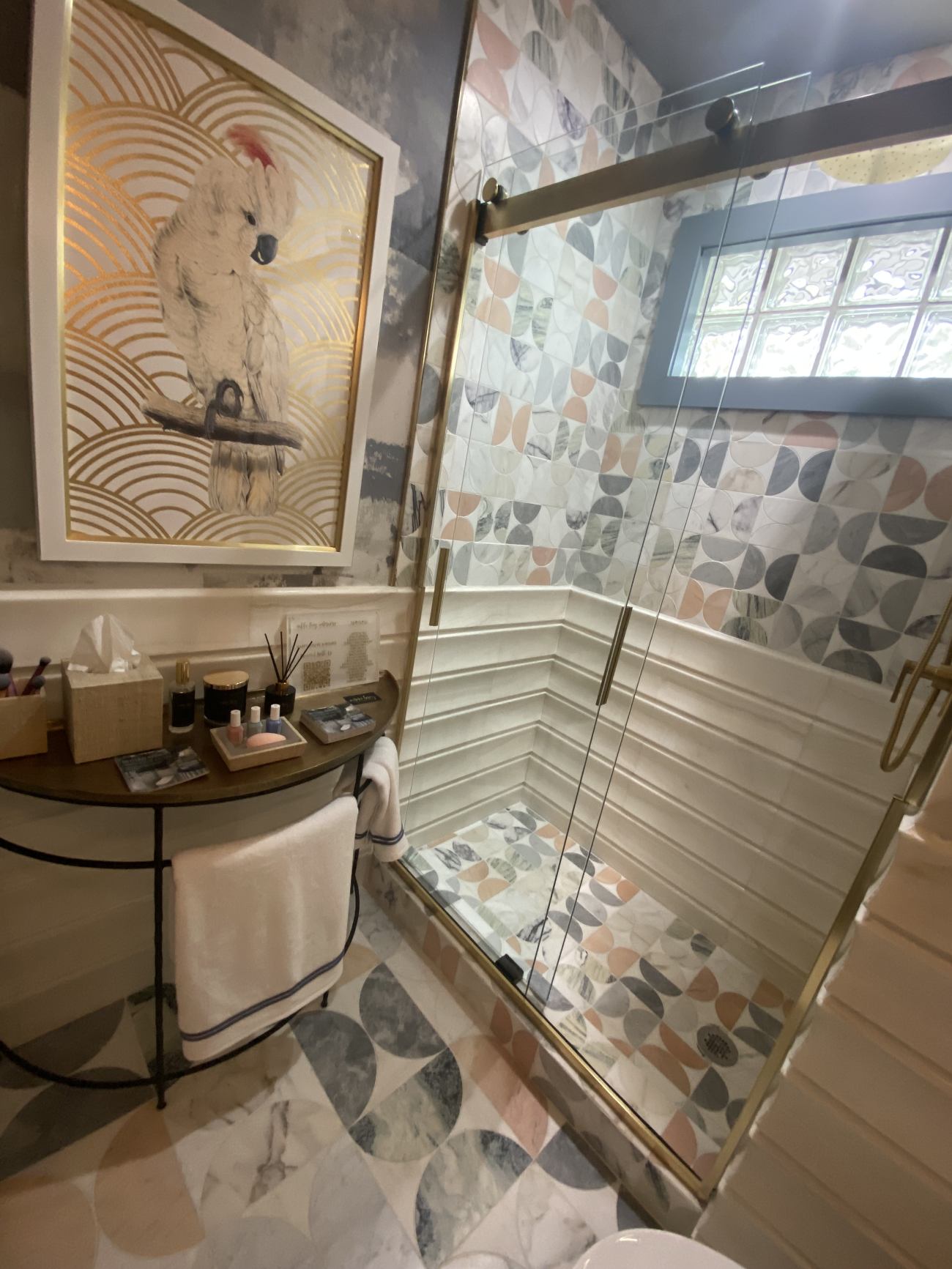
Whether you choose a vibrant tile color, lush wallpaper, eye-catching accessories, or a combination of elements, creating a colorful bathroom is an exciting process that will allow your bathroom to truly reflect your style and personality.
Ideas for Creating a Colorful Bathroom
Here are some ideas to help you create the colorful bathroom you have always wanted. Feel free to take one or mix and match several to make the space as vibrant as possible. Take these ideas and make them uniquely your own—after all, the goal is to create a space that reflects your personal style.
Try Color Drenching
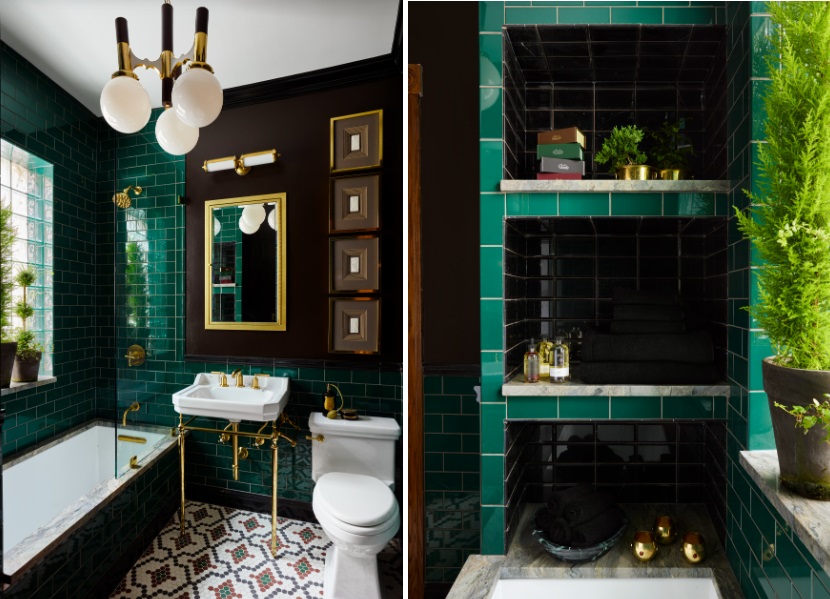
Color drenching is a technique that covers large areas with the same color. It is typically a painting technique that covers the walls, trim, and sometimes ceiling with the same colors. The result is a unified, immersive look that produces a striking visual impact.
Painting is one of the easiest ways to produce a color drenched room, but tile can be particularly effective for covering a bathroom in color. Tiling the walls from floor to ceiling in one color creates a design that is not just dramatic; it also helps to protect the walls from splashes and moisture that can deteriorate delicate drywall. Whether you choose a deep emerald green, a sunny yellow, or a dreamy blue, color drenching your bathroom with tile or paint will turn your bathroom into a standout feature of your home.
Incorporate Colorful Fixtures

Adding colorful bathroom fixtures such as bathtubs, sinks, and toilets is a fun way to bring unexpected color into your bathroom. Choose vibrant colors such as cobalt blue, bright red, or pastel pink fixtures to create a focal point that draws the eye. These vibrant fixtures can be combined with a neutral background to create a balanced look, or with a more colorful scheme for an eclectic vibe.
Layer in Vibrant Accessories
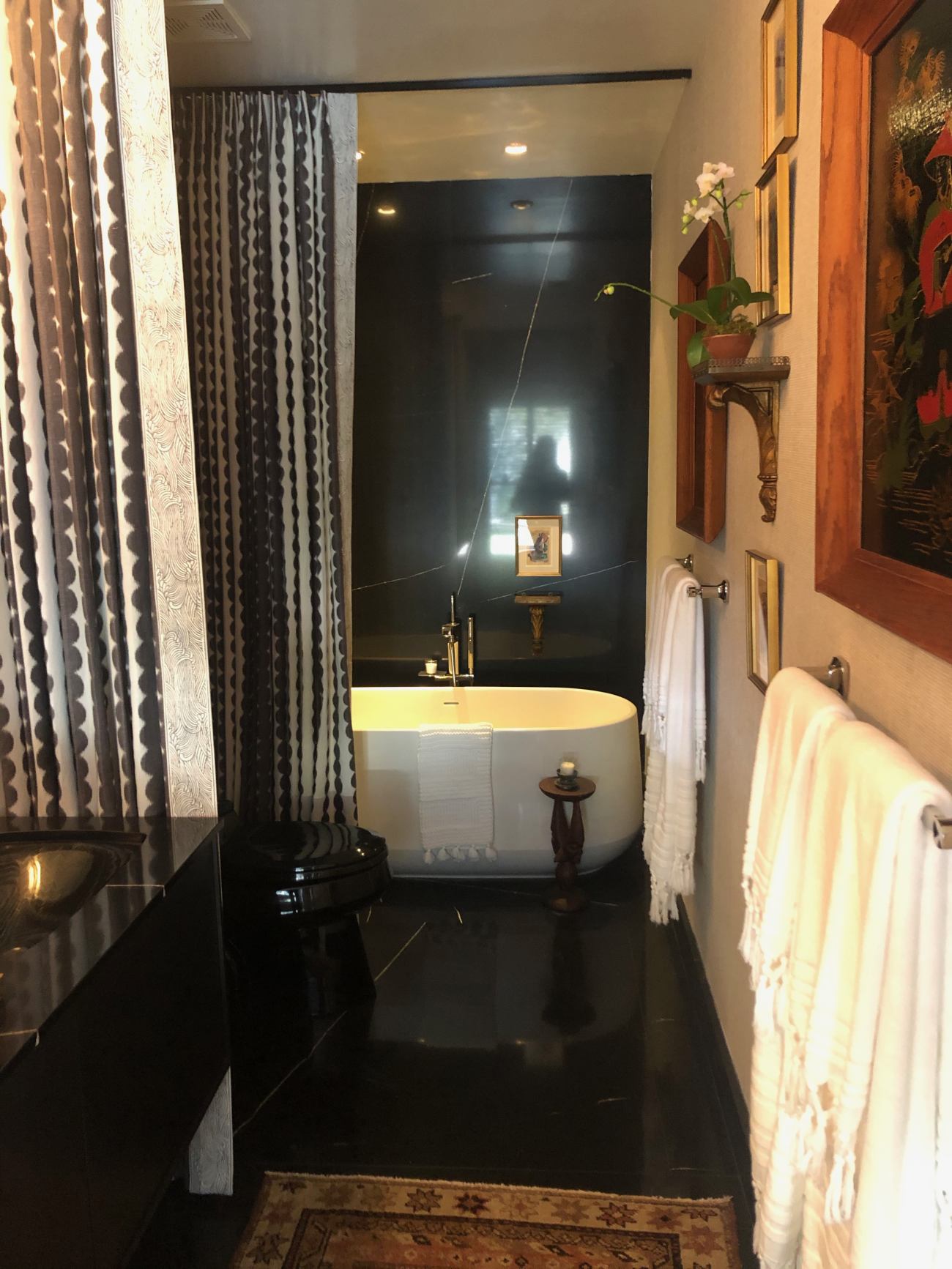
Adding colorful accessories, such as vibrant shower curtains and bath mats, is a low-cost and low-commitment way to brighten up your bathroom. Wall art, towels, soap dispensers, and window coverings are some other easy ways to add color to your bathroom. These accessories are not only functional; they can quickly transform an out-of-date and drab-looking bathroom into one that looks modern, fresh, and quirky.
Soft textile accessories like towels and bathmats are simple to change out seasonally or based on your mood. Use a variety of accessories with different colors, patterns, and textures to create a more complex and visually appealing bathroom design.
Try a Bold Wallpaper

Bold and vibrant wallpaper can quickly change the look of any bathroom by adding both color and pattern to the wall. Choose from a wide range of designs, including florals, geometrics, and abstract themes. Bold wallpaper creates an immediate visual effect that can make a bathroom more thoughtful and inviting.
Consider easy-to-install options such as peel-and-stick wallpaper, which is quicker to apply and much easier to remove than traditional wallpaper.
Choose Contrasting Colors
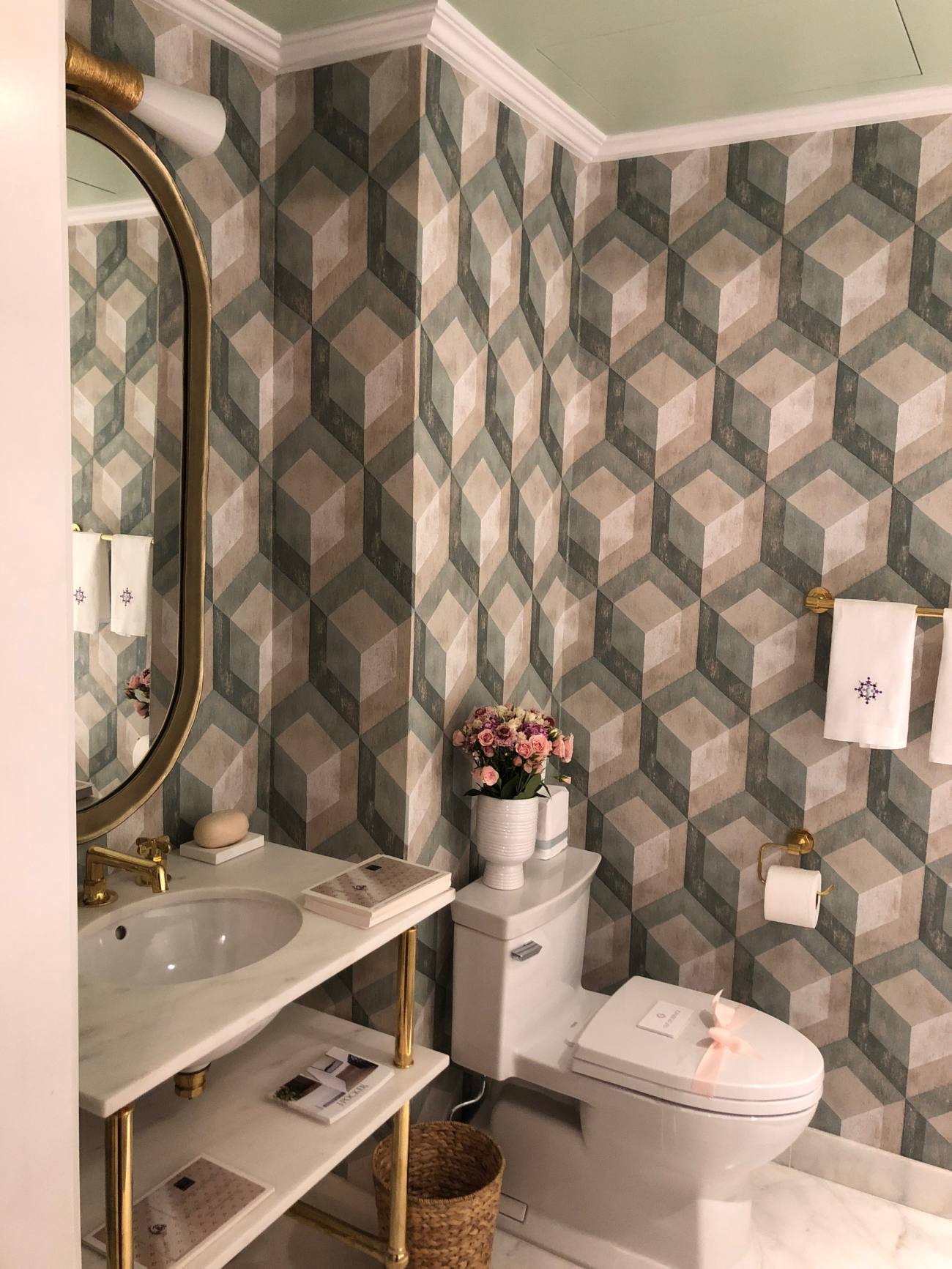
When you use contrasting colors in your bathroom design, you get both a balanced and visually appealing effect. A small space can gain depth and dynamic contrast by combining contrasting colors, such as green with pink or blue with coral. With this decision, each color is able to shine out and avoid becoming overpowering in the design. Even a small room can have more depth by using color contrast to draw attention to architectural fixtures and features.
Bring in Colorful Accent Furniture
https://www.houzz.com/photos/eclectic-bathroom-eclectic-bathroom-new-orleans-phvw-vp~166103472 (Houzz)
Tile and wallpaper additions are not always quick to complete, but a fresh coat of paint on a vanity cabinet or storage unit usually takes only one day. Colorful accent pieces, such as painted chairs, shelves, or stools, can add character and interest to a bathroom. These items not only provide an eye-catching feature to the room, they also provide practical storage for bathroom essentials.
Use a Bold Tile

A bold tile selection will significantly alter the appearance and feel of your bathroom, adding texture, color, and depth to the design. Consider using brightly colored tiles on the walls or floors to brighten the space while also protecting the walls. Herringbone, mosaic, and chevron patterns create an eye-catching and dynamic effect, especially when highlighted with grout.
Tile requires more long term commitment than many of the other colorful design ideas, so it will immediately make this bold move feel intentional and planned.
Highlight the Ceiling
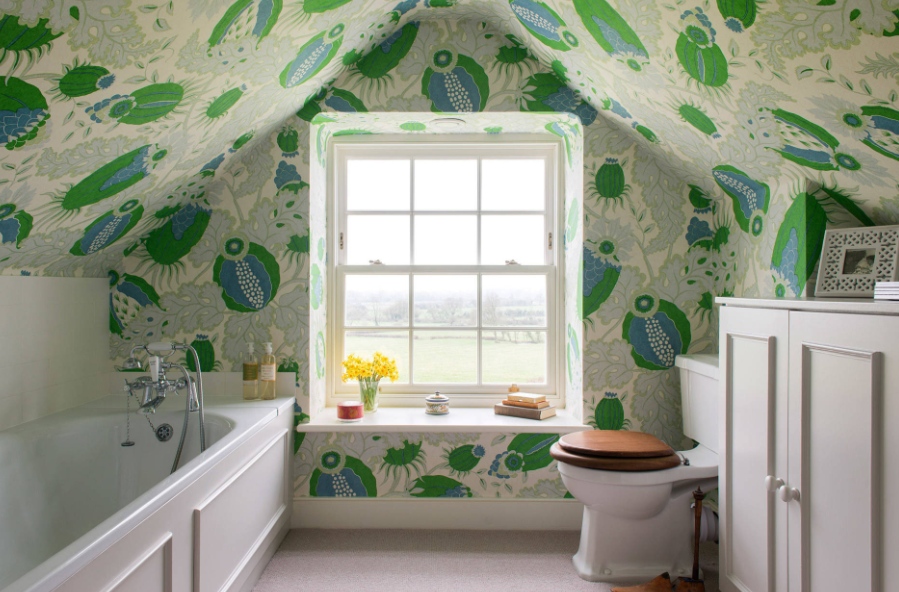
Use the room’s unique architectural features, such as a sloped ceiling or distinctive molding, to make it appear more custom. Paint a high ceiling or decorate a vaulted room with wallpaper. These frequently overlooked areas can become focal points if you use a color or pattern that contrasts with the walls. Alternatively, using a color or pattern that complements the walls can make the space appear larger.
Incorporating the ceiling or other similar architectural features into the design introduces an unexpected element that makes the design feel more cohesive and thoughtfully curated.
Incorporate Statement Lighting

Statement lighting elements that combine color and dynamic shapes can enhance both functionality and style in your bathroom. Consider pendant lights, sconces, and chandeliers in vibrant colors like red, blue, green, and gold. These fixtures provide necessary lighting while also acting as a decorative element, adding a layer of sophistication to the design.
In order to add layers of light to your bathroom, consider using non-fixed lighting elements, such as lamps, in addition to the specific lighting elements that complement your unique bathroom design.
Mix Vibrant Patterns
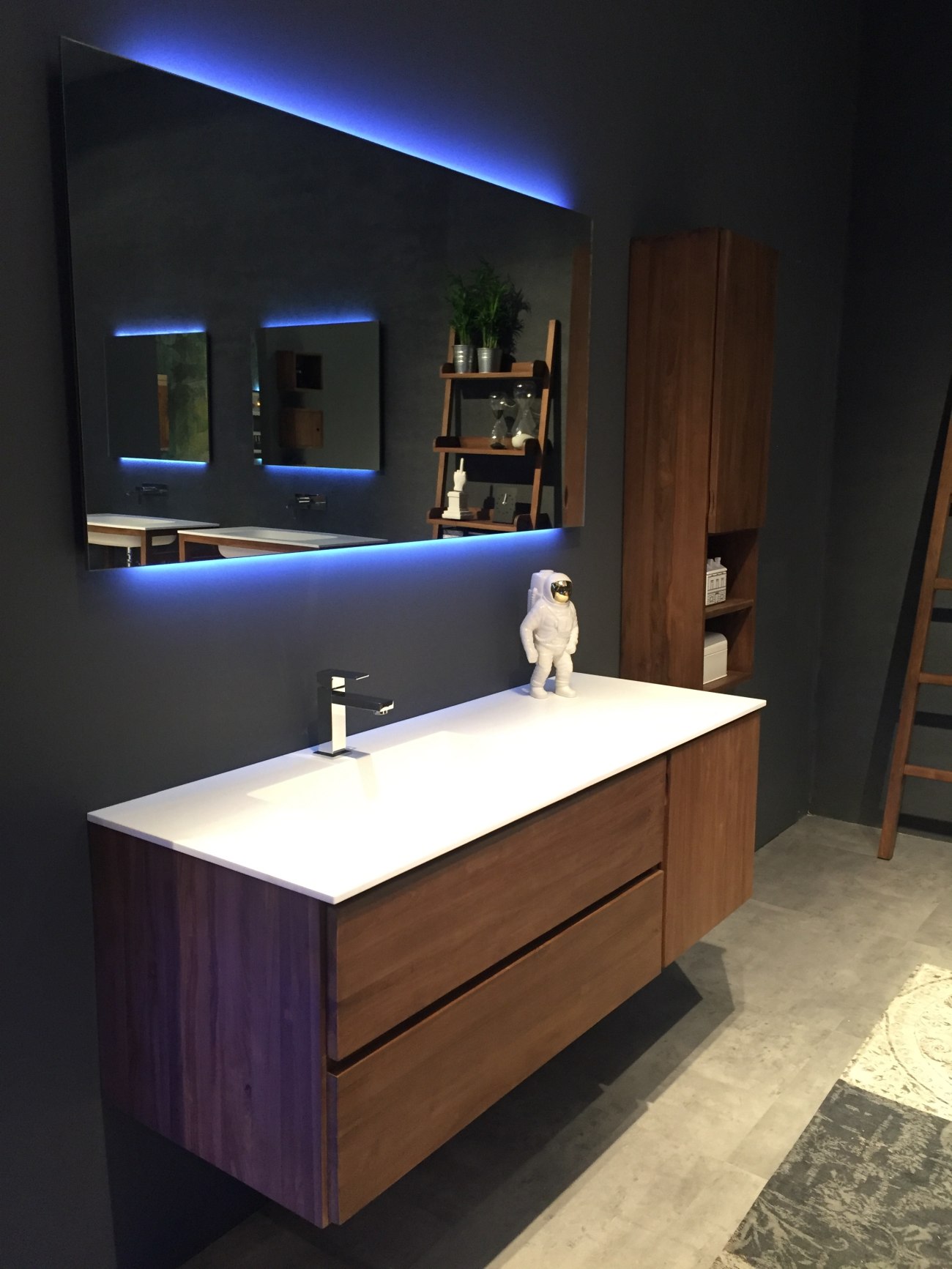
Mixing vibrant patterns in tile, textiles, and wallpaper patterns is a fun way to add a more eclectic vibe to your bathroom. Textiles are easy to add and remove, so they are a great place to begin experimenting with colorful pattern mixes. Be bold with your choices, knowing that they are easy to replace. If you like the way this looks, you can begin adding other colors and patterns to the mix using more permanent design features like wallpaper, tiles, and wall paint colors.
Bring in Nature
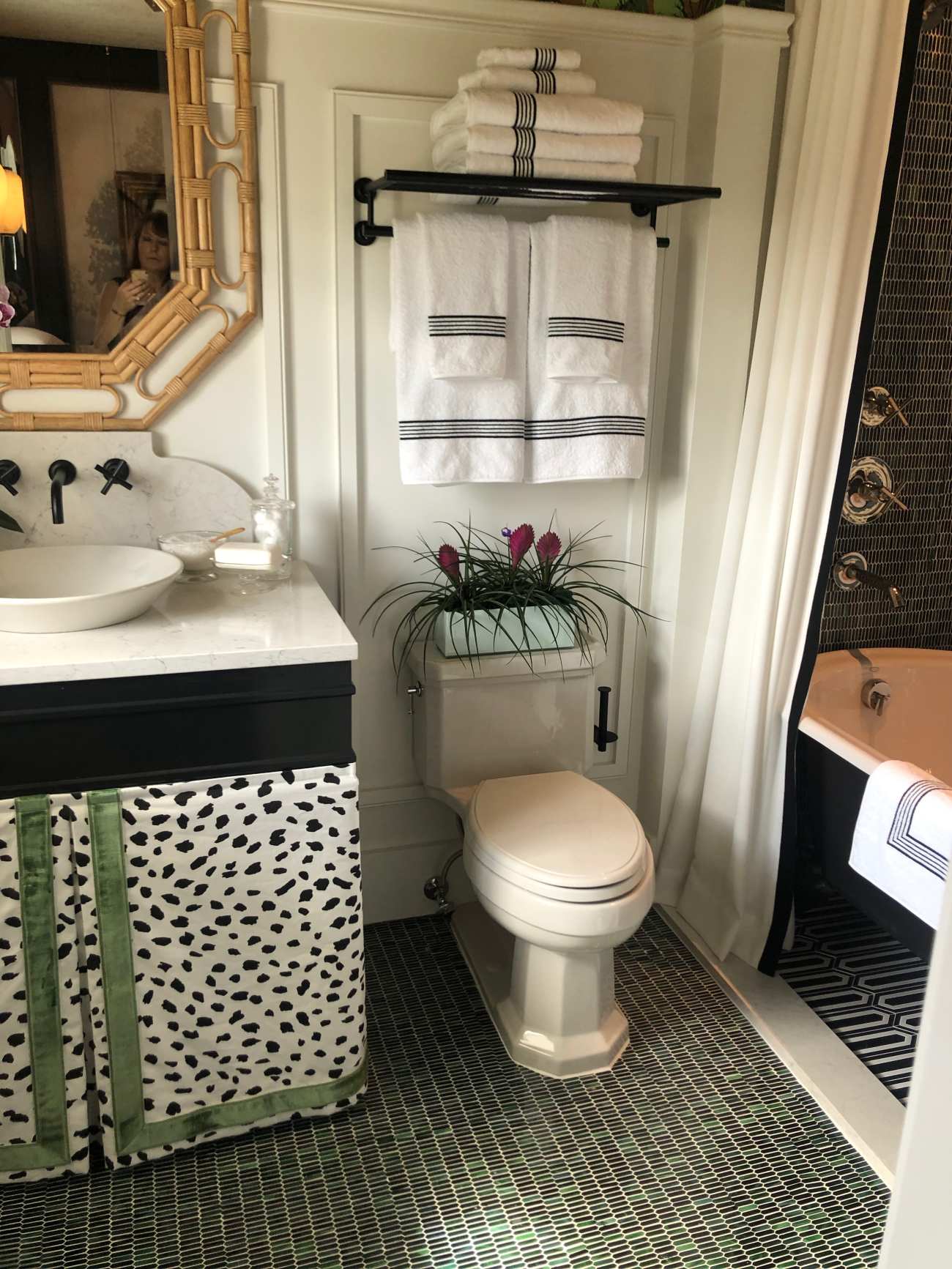
There are few colors that strike a deeper chord with humans than those found in nature. Plants and fresh flowers in your bathroom not only add color to the space, but they also provide organic texture and non-regular shapes that soften the bathroom’s harsh lines. Choose plants with colorful flowers or foliage that thrive in humid bathrooms, such as orchids, ferns, and begonias. Plants not only enhance the room’s aesthetic appeal, but they also improve air quality and create a more relaxing environment.
Plants should be used throughout the design, including on windowsills, ceiling hooks, and the floor. This will add layers of interest to the bathroom, making it feel more alive and fresh.
The post Update Your House With a Colorful Bathroom: Tips and Tricks to Nail the Style appeared first on Homedit.
Nigeria is gaining prominence in the global animation and gaming industries, and Ajayi Olabode stands out as a talented 3D character artist. His creations are known for their lifelike and engaging qualities, capturing attention on a global scale. The animation scene in Nigeria is receiving well-deserved recognition, with artists like Ajayi Olabode leading the way. […]
26 Apr, 2024 | Admin | No Comments
7 Spectacular African Digital Art Projects Inspired by African Science-Fiction
In the vast universe of speculative fiction, African science fiction stands out as a beacon of innovation, weaving narratives that blend ancient wisdom with futuristic visions with digital art. At the heart of African science fiction lies a cultural movement that explores the intersection of African diaspora culture with technology, science, and the imagination. Rooted […]